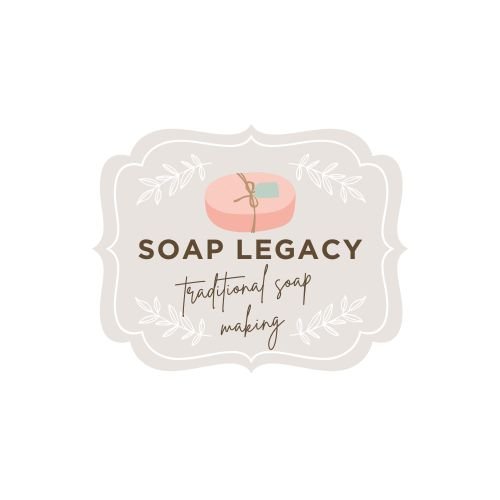You've hit heavy trace in your soap when it transforms to a pudding-like consistency that won't pour smoothly into molds. Look for distinct trails that hold their shape when you drizzle the batter, similar to thick frosting. Also watch for a rapid temperature rise above 120°F accompanied by excessive bubble formation on the surface. Understanding these warning signs helps you adjust your technique before your soap becomes unworkable.
Pudding-Like Consistency That Prevents Smooth Pouring

When your soap mixture transforms into a pudding-like consistency, you're facing one of the clearest indicators of heavy trace. This thick trace happens when your soap batter becomes so dense it won't pour smoothly into molds, jeopardizing your soap's final appearance.
You'll notice the mixture holding its shape rather than flowing, requiring careful manipulation to prevent air pockets or uneven distribution. This often occurs when you've used your stick blender too aggressively or added fragrance oils that accelerate the saponification process.
To manage consistency at this stage, work quickly to transfer the mixture to molds, using spatulas to level the surface instead of attempting to pour.
Alternatively, embrace the situation by creating textured tops for your soap—turning a potential problem into a design feature.
Distinct Trails That Hold Their Shape When Drizzled

As you drizzle soap batter across the surface of your mixture, distinct trails that maintain their shape provide an unmistakable indicator of heavy trace.
The batter resembles thick pudding or soft frosting, no longer flowing back into itself when disturbed.
This consistency signals advanced saponification, often resulting from extended mixing or fragrance additives that accelerate the process.
You'll notice the soap holds its shape completely, making it ideal for decorative techniques but potentially challenging for smooth pouring.
When monitoring your soap's progression, watch for these trails as they signal your mixture is well-emulsified.
At this stage, you can still incorporate colorants and final additives, but you'll need to work quickly before the batter becomes too thick for proper molding.
Rapid Temperature Rise and Excessive Bubble Formation

The chemical reactions taking place in your soap mixture provide additional visual and physical warning signs of heavy trace.
When monitoring consistency of your soap batter, pay close attention to both temperature and surface appearance.
- A rapid temperature rise exceeding 120°F signals the saponification process is accelerating, often indicating heavy trace has been reached.
- Excessive bubble formation on the surface occurs as air becomes trapped in the thickened mixture, unable to escape.
- Certain fragrance oils can dramatically accelerate this process, causing your batter to thicken unexpectedly fast.
- Without proper intervention, these conditions may lead to serious issues like ricing or crumbly texture in your final soap.
Recognizing these warning signs early allows you to adjust your technique before the soap becomes unworkable.
Frequently Asked Questions
How to Know When Soap Has Reached Trace?
You'll know your soap has reached trace when it thickens like pudding. Drizzle the mixture onto the surface – if it leaves visible lines or holds its shape, you've achieved trace consistency.
How Do I Tell if My Soap Is Lye Heavy?
You'll know your soap is lye heavy if it feels crumbly, has a chalky appearance, gives a zap when tested on your tongue, shows cracks or discoloration, or feels harsh and irritating on your skin.
What Does Trace Look Like in Soap Making?
In soap making, trace looks like a thickening batter. You'll see light trace when drizzled soap leaves visible lines, medium trace resembles thin pudding, and thick trace holds its shape like pudding.
What Happens if Soap Doesn't Trace?
If your soap doesn't trace, it'll likely separate back into oils and lye, creating an unsafe product with high lye content. You'll notice a watery consistency that won't hold additives or fragrances properly.
In Summary
When you notice pudding-like thickness, trails that stay put, or sudden heat spikes with bubbles, you're dealing with heavy trace. These warning signs mean you'll need to work quickly and adjust your technique. Don't panic—just pour immediately, minimize stirring, and simplify your design plans. With practice, you'll recognize these signals earlier and make better decisions about when to transfer your soap to molds.





Leave a Reply